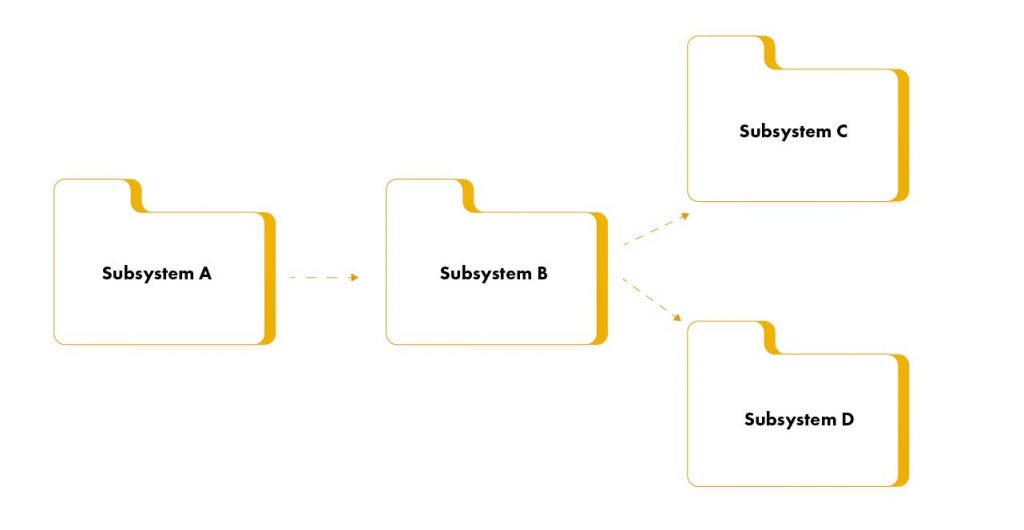The planning and implementation are intrinsic parts of every software development process, and you cannot skip them if you want to succeed with your IT project. This is the crucial phase of creating the source code in the evolving IT system. Find out the best implementation techniques that will rocket your software development process.
The implementation is an intrinsic part of every software development process, and you cannot skip it if you want succeed with your IT project. This is the crucial phase of creating the source code in the evolving IT system. Find out the best implementation techniques that will rocket your software development process.
Table of Contents
Things you will learn
During the implementation phase, developers need to focus on the system’s requirements and the project’s documentation, but not only. What is really important at this stage is the programmer’s experience. Hence, in this article, we present a bunch of useful techniques that will help you go through the stage of implementation effortlessly.
Let’s find out:
- What is the role of implementation in software development?
- What should every implementation stage consist of?
- How to conduct successful implementation step by step
- What are the best practices for software implementation?
What is the role of Software Implementation?
First of all, let’s clarify what an implementation is. Software implementation is a key part of a digital transformation strategy. From the business point of view, it is about adopting a newly created application into the client’s workflow. In other words, it allows companies to integrate the application into daily tasks. A good implementation is when the application functions well enough for the users to improve their satisfaction. Whether it is scheduling meetings or managing payments, it should bring benefits for the client, such as increasing productivity. Additionally, having the right computer hardware is essential for ensuring the software runs efficiently and securely.
When do you need implementation in software development?
Software implementation usually takes place while integrating new applications. It’s especially beneficial when the application aims at improving project management or logistics processes. The implementation also comes in handy when an IT team introduces some updates and makes changes to the existing application. During the developing phase, it is crucial to plan for future implementation needs to ensure a smooth transition.
Check out in our case study how we helped a logistic company to cope with transportation challenges.
What are the software implementation goals?
The stage of software implementation aims to implement and organize the software’s source code, bringing out a lot of benefits to the software development lifecycle. It aims at:
- organizing the software’s source code (e.g. by arranging subsystems as layers),
- deploying classes as components (e.g. source files and binaries),
- performing unit tests of the components,
- integrating parts of source code into the whole system.
The main parts of the implementation phase
What should the implementation stage look like in software development? There are some fundamental parts that lend a flow to every implementation phase. The fully-fledged implementation should consist of the following steps:
- Planning implementation
- Creating an implementation model
- Preparing for integration
- Implementing the components
- Integrating the system
- Establishing a robust knowledge base for post-implementation support
4 steps to Successful Implementation in Software Development
There are some essential parts of the implementation process that will foster SDL and bring benefits to the whole IT project. Here is a step-by-step guide for implementing software successfully:
1. Prepare a good implementation plan
A good plan will definitely contribute to successful implementation. As implementation relates to the whole SDL, you should plan it in advance. Proper training tailored to specific roles within the team is crucial for maximizing the return on investment and achieving the full benefits of the new solution. It’s good to think of how you can incorporate implementation within the following stages of the IT project:
- Requirements – at this stage, you can establish the implementation requirements
- Design – here, it’s good to decide on the input for the implementation
- Testing – is one of the most important phases of implementation, as it focuses on detecting and reporting if a system meets the requirements. Here IT team should be well-prepared to test if the whole solution works properly.
- Environment – this stage is the moment to plan how to deal with keeping the information during implementation. You can describe it in the process descriptions and programming guidelines.
- Deployment – this stage describes how to use the implementation model to deliver code successfully to the customer.
- Project Management – it helps to organize the whole planning process of implementation and set up the rules for iteration or making changes to the system.

You can read more about the role of testing in a software house here:
Why software testing is important for tech startups?
2. Create an implementation model
The next step is building an implementation model. Its basic assumption is to enable the correct development of components and smooth the compilation process. At this phase, the main aim is to develop the basic structure of the implementation process. This task should go to the software architect, who has some experience in system integration.

3. Take care of the component implementation
The main purpose here is to create the complete source code, including the design assumptions of the project. That’s why at this stage, teams of developers work hard on writing the source code, compiling, etc. The main goal for IT specialists at this stage is to give valuable feedback on what’s working (or not) in the system in terms of design. Also, developers focus on detecting if the system functions well after introducing changes by performing unit tests.
As part of this stage, developers perform the implementation of:
- operation
- design patterns
- correlations between classes
- class attributes
Additionally, they:
- provide feedback on the system’s design
- and assess the source code quality
4. Integrating the system
In order to take care of the whole IT systems integration and its subsystems’ integration, you need automation. That’s why performing automated compilations come in handy. Also, automated unit tests help to keep up with the changing status information within the compilation process.

You can read more about application integration here:
Application Integration in a Nutshell – A Guide for Beginners
Support and Maintenance
Implementing software is just the beginning. To ensure long-term success and optimal performance, continuous support and maintenance are crucial. This phase involves regular updates, bug fixes, and enhancements to keep the software running smoothly and efficiently. Effective support and maintenance can significantly extend the lifespan of the software and improve user satisfaction.
Monitoring and maintaining the system
Once the software is implemented, it’s essential to monitor its performance and maintain its functionality. This involves setting up automated monitoring tools to track system performance, detect anomalies, and identify potential issues before they escalate. Regular maintenance tasks include updating software components, patching security vulnerabilities, and optimizing system performance.
By proactively monitoring and maintaining the system, you can ensure that the software remains reliable, secure, and efficient, providing continuous value to the users. This ongoing process is a critical aspect of the software development lifecycle, ensuring that the investment in software development continues to yield benefits over time.
Summary
A well-prepared implementation is a way to build a fully-fledged application with all its elements completely integrated. Working with experienced developers will certainly help you in conducting successful integration in your software development process. So, don’t hesitate to contact us — we’ll be more than happy to advise you on your IT issues!
If you’re interested in fresh news from the IT world, visit our blog. Here, we regularly post on technology-related topics.
